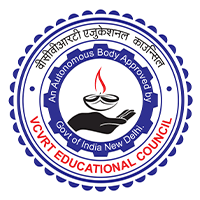Green World Group is a world-class NEBOSH Course Provider
We are proud to be A Gold Learning Partner
The course presents the principles and key issues of nuclear safety, including the following topics
In this course, students explore the engineering design of nuclear power plants using the basic principles of reactor physics, thermodynamics, fluid flow and heat transfer. Topics include reactor designs, thermal analysis of nuclear fuel, reactor coolant flow and heat transfer, power conversion cycles, nuclear safety, and reactor dynamic behavior.
The purpose of this qualification is to disseminate lessons learned information regarding training and human resource considerations for commissioning of nuclear power plants(NPPs).The IAEA technical working group on training and qualification of nuclear power plant personnel.
Subject cover the experiences gained regarding commissioning training for nuclear power plant projects This recommendation was made in recognition that in many of the Member States with operating nuclear power plants it has been some years since an NPP has been commissioned, and most of the staff with experience in commissioning have since retired. Additionally, in a number of Member States serious consideration is being given to initiating new nuclear power programmers. This publication is intended to provide useful information for both of these situations.

Accredited Training Partners
We have proven ourselves the No.1 safety institute by delivering high-quality Diploma training for an international audience in more than 195 countries.
What is NEBOSH OPEN BOOK Examination?
Learning Modes
NEBOSH Courses can be delivered in various learning modes
NEBOSH Virtual Learning Platform
Why Take Virtual Live Training in Green World Group ?
This Qualification is intended to apply to commissioning of NPP projects in Member States that are initiating their nuclear power programmers, as well as in those Member States with established nuclear power programmers.
This Safety Guide was prepared under the IAEA programmer for establishing safety standards for nuclear power plants. It provides recommendations on fulfilling the Safety requirements on Safety of Nuclear Power Plants:
This Safety Guide was prepared under the IAEA programme for establishing safety standards for nuclear power plants. It provides recommendations on fulfilling the Safety requirements on Safety of Nuclear Power Plants:
This Safety Guide was prepared under the IAEA programme for establishing safety standards for nuclear power plants. It provides recommendations on fulfilling the Safety requirements on Safety of Nuclear Power Plants:
Students will be able to recognize and recall the basics of nuclear reactor terminology, definitions, and concepts associated with reactor physics and theory and technology of nuclear power plant.
Students will learn principals of water chemistry control for nuclear power plant systems.
Students will classify different materials and alloys in power plant application and describe effects of radiation on them such as fracture of nuclear fuel, stress development in the reactor vessel wall, erosion/corrosion effects.
Students will apply their knowledge of basic electrical theory, basic alternating current (AC) and direct current (DC) theory in application to nuclear power.
Students will apply their knowledge of mechanical engineering principals to the theory of valve fundamentals and components, pumps, turbines, vibration, rotating equipment safety
Civil engineering design principals and considerations will be named.
The construction and principle of operation of the different sensing and indicating devices used at power plants will be explained to students. Radiation protection in nuclear facilities;
- Design of a nuclear reactor, interfaces with security;
- Safety classification of structures, systems and components;
- Deterministic accident analysis and probabilistic safety analysis;
- Links between probabilistic, deterministic analysis and risk informed decision making;
- Sitting considerations and environmental impact assessment;
- Operational safety, including operational feedback;
- Limiting conditions for operation;
- Plant renewals, modifications and upgrades, ageing;
- Maintenance and surveillance programmers;
- In-plant accident management and emergency preparedness and response;
- Safety of the fuel cycle, management of spent fuel and safety of transport of radioactive material;
- Decommissioning and waste management;
- Regulatory control;
- Management system, leadership and safety culture;
- Human performance;
- Public communication
1. OVERALL TRAINING AND HUMAN RESOURCE ISSUES FOR COMMISSIONING
1.1. Terminology and background
1.2. Types of NPP projects and their structures
1.3. Considerations regarding training and HRM issues for turnkey and split- package contracts
1.4. Staffing plans for the commissioning phase
1.5. Training programmes and plans
1.6. Training materials for commissioning
1.7. Control room simulator training
1.8. Training organization for commissioning
1.9. Use of system engineers
2. Training of maintenance staff, and other plant personnel during commission
2.1. TRAINING AND HUMAN RESOURCE ISSUES FOR SPECIFIC SITUATIONS
2.2. Issues for the first NPP in a country or organization
2.3. Specials issues for the FOAK Plant added to an existing fleet
2.4. Special issues for rapid expansion of an existing NPP fleet
3. MANAGEMENT AND ORGANIZATION OF PLANT OPERATIONS
3.1. Functions and tasks of plant operations
3.2. Operating policy
3.3. Human resources and qualification of personnel
3.4. Performance objectives and standards
3.5. Interfaces with other plant groups
4. SHIFT COMPLEMENT AND FUNCTION
4.1. Shift supervisor
4.2. Operators
4.3. Shift safety engineer or technical adviser
4.4. Shift technical support personnel
5. SHIFT ROUTINES AND OPERATING PRACTICES
5.1. Shift arrangements
5.2. Shift operations
5.3. Shift turnover
5.4. Availability and use of operating procedures
5.5. Pre-job briefings
5.6. Conduct in the control room
5.7. Shift rounds
5.8. Communications
5.9. Shift records and log keeping
6. CONTROL OF EQUIPMENT AND PLANT STATUSLabeling of plant equipment
7. HUMAN RESOURCE CONSIDERATIONS FOR COMMISSIONING OF NPPS TRAINING OF PERSONNEL FOR THE COMMISSIONING OF CERNAVODA NPP (ROMANIA)
8. OLKILUOTO 3 NUCLEAR POWER PLANT TRAINING AND HR ISSUES FROM THE NPP OPERATING ORGANIZATION PERSPECTIVE (FINLAND)
9. TRAINING OF MANPOWER FOR COMMISSIONING PROJECTS TAPP- CASE STUDY (INDIA)
10. SHIN WOLSONG CONSTRUCTION AND COMMISSIONING,TRAINING IN KHNP (ROK)
11. KHNP STAFFING PLAN OF CONSTRUCTION SITE OFFICE: LCHIN 5&6 CONSTRUCTION PROJECT (ROK)
11.1. Full Digital I&C and HMIT Systems
11.2. Study on Modeling of an Integrated Control and Condition
11.3. Monitoring System for Nuclear Power Plants
11.4. A Toolkit for Computerized Operating Procedure of Complex Industrial Systems with IVI-COM Technology
11.5. Development and Design Guideline for Computerized Human–Machine Interface in the Main Control Rooms of Nuclear Power Plants
11.6. Risk Monitor Methods for Large and Complex Plants
11.7. Overview of System Reliability Analyses for PSA
11.8. A Systematic Fault Tree Analysis Based on Multi-level Flow Modeling
11.9. Reliability Graph with General Gates: A Novel Method for Reliability Analysis
11.10. Design of Risk Monitor for Nuclear Reactor Plants
11.11. Review of Practicing Level-2 Probabilistic Safety Analysis for Chinese Nuclear Power Plants
11.12. Risk Monitoring for Nuclear Power Plant Applications
11.13. Using Probabilistic Risk Assessment
11.14. Part III Condition Monitors for Plant Components
11.15. Condition Monitoring for Maintenance Support
11.16. Condition Monitoring to Enable Extended Operation of Nuclear Power Plants
11.17. Using Condition-Based Maintenance and Reliability-Centered Maintenance to Improve Maintenance in Nuclear Power Plants
11.18. Advanced Management of Pipe Wall Thinning Based on Prediction-Monitor Fusion
11.19. Non-destructive Evaluation of Material State by Acoustic,
11.20. Electromagnetic and Thermal Techniques 21 Non-contact Acoustic Emission Measurement for Condition Monitoring of Bearings in Rotating Machines Using Laser Interferometry
11.21. Acoustic Monitoring of Rotating Machine by Advanced Signal
11.22. Processing Technology
11.23. The Wireless Diagnostic System for Motor Operated Valves
11.24. Part IV Virtual and Augmented Reality for Nuclear Power Plants
11.25. Virtual and Augmented Reality in the Nuclear Plant Lifecycle Perspective
11.26. A Feasibility Study on Worksite Visualization System
11.27. Using Augmented Reality for Fugen NPP
11.28. Augmented Reality for Improved Communication of Construction and Maintenance Plans in Nuclear Power Plants
11.29. 3D Representation of Radioisotopic Dose Rates Within Nuclear Plants for Improved Radioprotection and Plant Safety
11.30. Wide Area Tracking Method for Augmented Reality Supporting
11.31. Nuclear Power Plant Maintenance Work
11.32. Part V Software Reliability V&V for Nuclear Power Plants
11.33. Research on Software Systems Dependability
11.34. at the OECD Halden Reactor Project
11.35. High Level Issues in Reliability Quantification of Safety-Critical Software
11.36. 32 Software Reliability Analysis in Probabilistic Risk Analysis
11.37. Power Reactors
11.38. Reactor Systems
11.39. Uranium Enrichment.
11.40. Converter Reactors With a Thermal Neutron Spectrum
11.41. Breeder Reactors With a Fast Neutron Spectrum
11.42. Neutron Lifetime
11.43. Masses of Fuel, Fission Products and Actinides
11.44. Technical Aspects of Nuclear Fuel Cycles
11.45. Waste Disposal
11.46. Nuclear Fuel Cycle Options
11.47. Minor Actinides: Partitioning, Transmutation and Incineration10 Radioactive Releases from Nuclear Power Plants
11.49. Radionuclides
11.50. Nuclear Accidents
11.51. Summary of Safety Research Findings
THEORY PAPER:-
International Atomic Energy Agency (IAEA) Framework/ Organizational Structure (100 Marks)
Commissioning of Nuclear Power Plants – Training & Human Resource Considerations (100 Marks)
Probabilistic Risk Assessment for Nuclear Power Plants (100 Marks)
Progress of Nuclear Safety for Symbiosis and Sustainability (100 Marks)
Sustainable and Safe Nuclear Fission Energy (100 Marks)
Practical:
Case studies on Nuclear Power Station Catastrophic Disaster investigations and subsequent recommendations. (400 Marks).
Enquiry Us
Get Your Query Answered / Get Counselor Assistance To Choose the Right Course for You Or Your Associates





